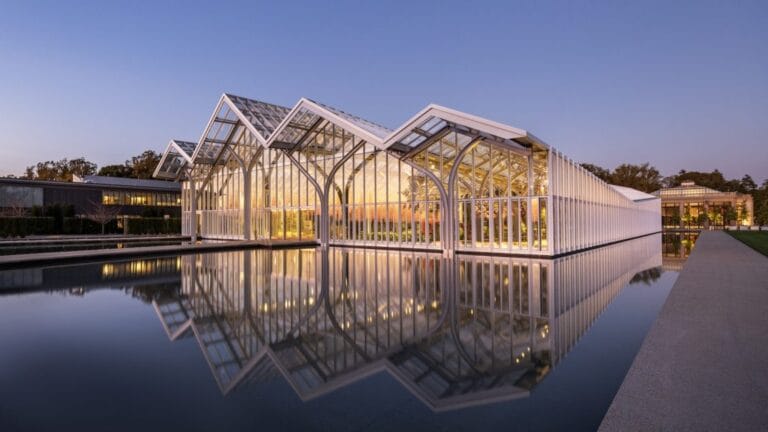Inside the Japanese Style Room: History, Design, and Modern Practice

When examining photos of Japanese houses, one frequently notices a recurring space with tatami mats, often slightly elevated and integrated into the public areas of the home. This is the washitsu, or Japanese-style room: a traditional, multipurpose space still commonly found in modern residential architecture. Used for activities ranging from reading and sleeping to hosting a family altar, its versatility is central to its continued relevance. This article explores the Washitsu’s layout and meaning, beginning with its historical origins to better understand its role and interpretation in contemporary Japanese homes.





According to Günter Nitschke in his book about Japanese Gardens, the washitsu emerged alongside the development of the Japanese dry landscape garden during the Kamakura and Muromachi periods. During this time, gardens evolved from literal imitations of nature to compositions meant for static contemplation. These gardens started as part of Buddhist temples, usually laid next to the abbot’s quarters and the guest hall. This period also marked a cultural shift from palace-centered life to the domestic sphere of the samurai class, which maintained close ties to Zen monasteries. Nitschke suggests that samurai culture needed spaces for informal gatherings and entertainment. Thus, it combined this architectural feature with a space known as Kaisho, or assembly hall, originally employed in palace architecture, where it served as a multi-purpose space for things like banquets, poetry, tea ceremonies, and flower arranging.

This historical convergence laid the foundation for shoin-style, or “writing room” architecture. Since the dry landscape garden was intended to be observed while seated in stillness, an interior space was needed for viewing. A classic example is the Kojoin Reception hall at Miidera Temple in Otsu City, near Kyoto. In this virtual tour offered by the temple, it is possible to see features such as a slightly elevated alcove with a built-in wooden desk facing a window that frames the garden. As this architectural style evolved, it transitioned from temple complexes to Samurai residences and eventually into the broader public domain, becoming a defining feature of traditional Japanese residential architecture.
Related Article
Japanese Architecture Offices Through the Lens of Marc Goodwin
The parts that make up shoin architecture are also clearly defined: Tatami mat flooring, a built-in alcove (Tokonoma) for displaying flower arrangements or scrolls, sliding doors called shoji separating the interior from the garden, and decorated doors called fusuma separating the room from other interior spaces. Other elements may include the Tsuke-Shoin or built-in desk, which, as mentioned, was used to write while contemplating the garden, and built-in shelves also known as Chigaidana.

Contemporary Japanese interiors show the enduring influence of shoin architecture, as designers reinterpret traditional elements within modern contexts. Some projects preserve classic features by incorporating raised platforms, tatami flooring, and architectural details such as the tokonoma alcove. In contrast, other designs adopt contemporary approaches, substituting tatami with materials like wooden floorboards and replacing shoji with glass walls to enhance natural light and visual connection to the outdoors. In certain cases, the washitsu is integrated into open-plan living and dining areas, blurring the boundaries between traditional and contemporary spaces. This influence is also visible beyond Japan, particularly in the rise of the Japandi style, a fusion of Japanese and Scandinavian design principles that has gained widespread popularity through digital media.
Villa Nagiso Renovation / OTAA.llc

Located in the town of Nagiso in Nagano Prefecture, the lodge uses the Japanese room as a space to contemplate the surrounding tea plantation and mountain scenery. The old tatami mats were removed and replaced with “Kiso hinoki bark board,” a flooring material developed jointly with a local forestry and lumber company. The chigaidana is reinterpreted as an extruded shelf floating above the floor, however, shoji and tokonoma are not present.
room206 Apartment / Daiki Awaya

In room 206 Apartment by Daiki Awaya, the Japanese-style room was placed as an island element in the center of the house. This element can be turned into a private room by opening and closing the curtains, creating an island that changes its expression according to the time, as the space is connected to the apartment in the morning and afternoon, while becoming a sleeping space at night. The corners of the island and the alcove are rounded to create a softness that accentuate the space.
Neyagawa window / bay window / PERSIMMON HILLS architects

This apartment was created by merging two smaller units into a single, larger living space. At its core, a raised tatami room, framed in a wooden box, overlooks both a large window and the open dining and kitchen area. The space features square tatami mats, a built-in alcove, and minimal shelving, all defined by clean lines that give it a contemporary aesthetic. Located within the public zone of the apartment, the tatami room adopts a multifunctional role, accommodating a range of daily activities while maintaining a distinct yet integrated presence.
Traditional Kominka Renovation in Jonan / Takashi Okuno & Associates

In this renovation of a traditional Japanese home, the washitsu was integrated into the living room, resulting in a more unified but functionally specific space. Positioned in a corner, the tatami area supports activities such as garden contemplation or watching television, shaping the living room into a place of both rest and visual engagement. While most traditional elements of the washitsu are omitted, aside from the tatami itself, the design maintains a sense of openness through large windows that frame the exterior. Despite its simplified layout, the space retains a degree of flexibility.
Terasho House / ALTS Design Office

Set within a rural landscape, the house is designed to evoke an outdoor-like atmosphere by seamlessly connecting interior spaces with views of the surrounding environment. The Japanese-style room occupies a dedicated zone nestled between two gardens, reinforcing the dialogue between inside and outside. Fully glazed walls open the tatami room to the adjacent greenery, enhancing visual continuity and immersion in nature. Positioned along the circulation path that leads to the main social areas, the room becomes a focal point of the house. Its built-in alcove and strategic placement support both visual prominence and ease of interaction.
T3 House / CUBO design architect

In the T3 House, the washitsu serves as a central element that reflects the clients’ appreciation for Japanese cultural traditions and spatial aesthetics. Functioning as a contemplative space, the tatami room integrates references to the tea ceremony and traditional architectural principles. Designed with natural materials and clean lines, the space incorporates key components of shoin architecture and tea house design, interpreted within a contemporary formal language.
This article is part of an ArchDaily series that explores features of interior architecture, from our own database of projects. Every month, we will highlight how architects and designers are utilizing new elements, new characteristics and new signatures in interior spaces around the world. As always, at ArchDaily, we highly appreciate the input of our readers. If you think we should mention specific ideas, please submit your suggestions







